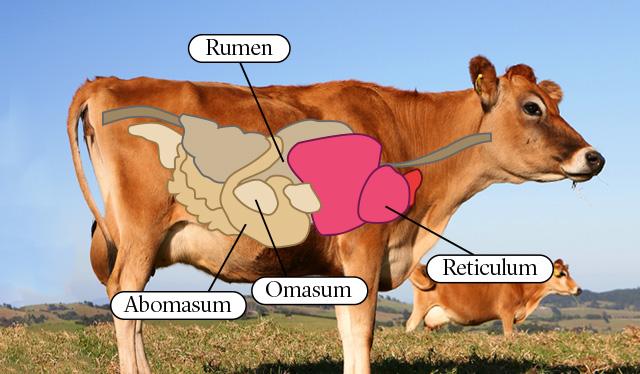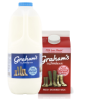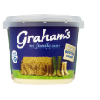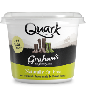

At Graham’s we know that a lot of people are curious about our Golden Girls and want to know more about them. We also know that not everyone is lucky enough to have been brought up on a farm or around a dairy, so we want to share some of the knowledge that we take for granted. One question that comes up a lot about our bovine friends is ‘how many stomachs does a cow have?’
Before we answer that though, we should tell you a little bit more about the noble cow and why their digestive systems work the way they do.
What type of animal is a cow?
We do take some cow knowledge for granted but, to be honest, even we aren’t in the habit of referring to our four-legged dairy friends as ‘ungulates’. This is the correct term for the group of mammals that cows belong to though. It’s a word that roughly means ‘hoofed animal’.
As well as being classed as ungulates, cattle are also classed as ruminates. This is where their digestive system becomes important. That’s because ruminates are mammals that have evolved to be able to live off plants that are harder to digest – like grass.
How do they do that? By being able to regurgitate and re-chew their food, helping to break it down and allowing more of the nutrients to be extracted from it and absorbed by their bodies.
So how many stomachs does a cow have?
Cows actually only have one stomach… but it has four different compartments to it, so you will hear them being described as having four stomachs. Each compartment is used for a different stage of their digestive process. When you see cows grazing on grass, they’re just swallowing it straight down without even chewing it. At this stage, the grass goes into the first of their stomach compartments, the rumen. From there, it will be regurgitated, chewed and re-swallowed a few times, while microbes in the rumen will also help to break the food down.
The cow’s next compartment is called the reticulum and it’s used for anything rogue that our hooved pals might have picked up while hoovering up their fresh grass. Any foreign objects go into the reticulum, where they’re usually broken down by the stomach acids within it.
The omasum is the next stomach stage and it’s where the moisture from the cow’s meal is absorbed. The omasum is a very clever part of the stomach because it has different layers to it (a little like the pages of a book), meaning that it has a larger surface area and can absorb more of that important moisture.
Finally, we get to the part of the stomach that feels closest to our own human tummies. It’s called the abomasum and it releases enzymes that can digest protein and starch, helping to break down anything that wasn’t already digested earlier on in the rumen.
What goes into the tummies of Graham’s cows?
Our own cows are grass fed for most of the year, then grain fed in the winter when grass is – quite literally – scarcer on the ground. During these winter months our girls are fed a silage mixture, which is made up mainly of cut/fermented grass. However, we do also add grains to this mixture to bulk it up.
The cattle producing our organic milk are fed through the same process. The difference is that they graze on organic grass and the feed they eat in the winter months has been made with an organic silage mixture. The grains added to that silage mix are also organic.
What have you learned?
So now you know just how amazing cows are! Their bodies put in a lot of work to absorbing the maximum nutrient value from what they eat. That’s what helps to make milk so nutrient-packed and delicious. At Graham’s we’re very proud both of our milk and of the girls who produce it.














